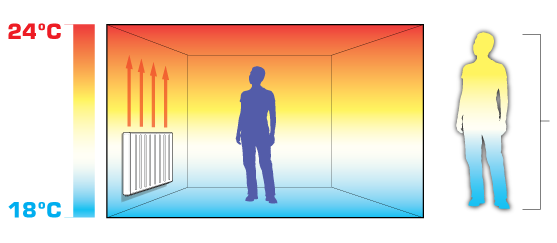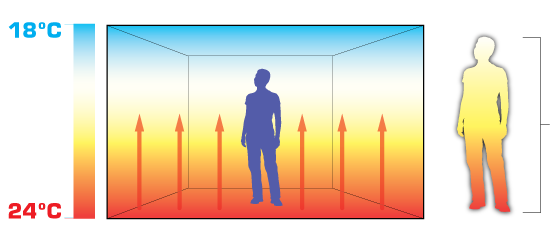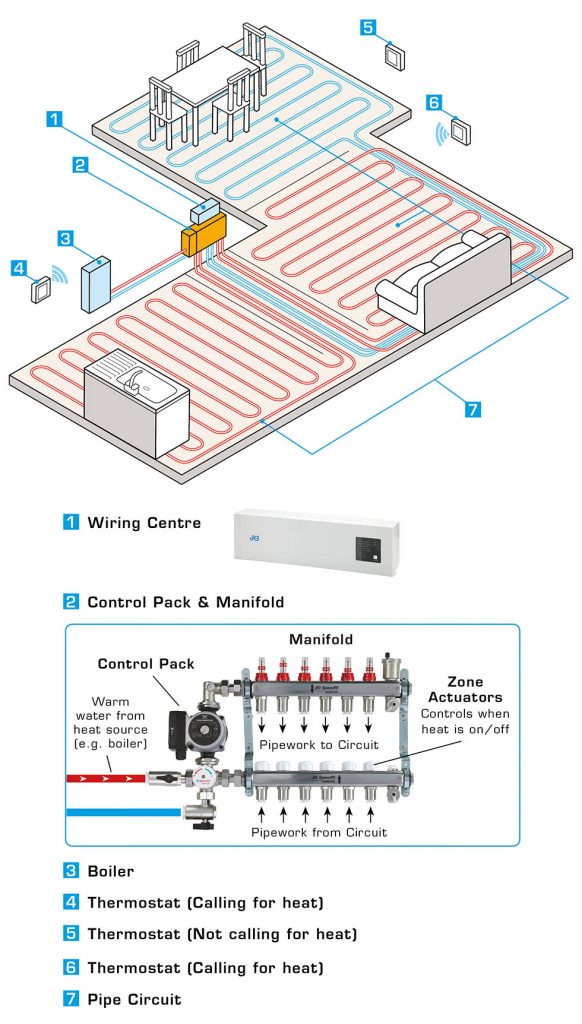How Underfloor Heating Works
Comparison of Conventional Heating and Underfloor Heating
Underfloor heating provides the most comfortable, even warmth of any heating system. It is economical to run and virtually maintenance free. John Guest Underfloor heating uses mainly radiant heat, the most comfortable form of heating, giving an even distribution of warmth over the whole room.
By contrast, radiators transfer energy using convection, heating the air above and around the radiator at a much higher temperature, causing the warm air to rise. This results in the floor being the coolest place in the room, with the mass of warm air at ceiling level. Underfloor heating resolves this issue by ensuring there are no more cold spots and that heat is distributed evenly where it is needed most.
A conventional radiator can be as hot as 75°C, whilst an underfloor heating system has a much lower and safer surface temperature between 25-27°C.
Radiators

The warm air from radiators rises making the floor the coolest place in the room and the ceiling the warmest.
Underfloor Heating
Understanding How Underfloor Heating Systems Work
Underfloor heating works by distributing a lower temperature of warm water though a circuit of pipes beneath the finished floor. Heat is monitored and controlled by intelligent thermostats to maintain a consistent temperature throughout the property or individual zones.
Any heat source can be used for underfloor heating such as standard, combination, condensing or biomass boilers, heat pumps and stoves.
